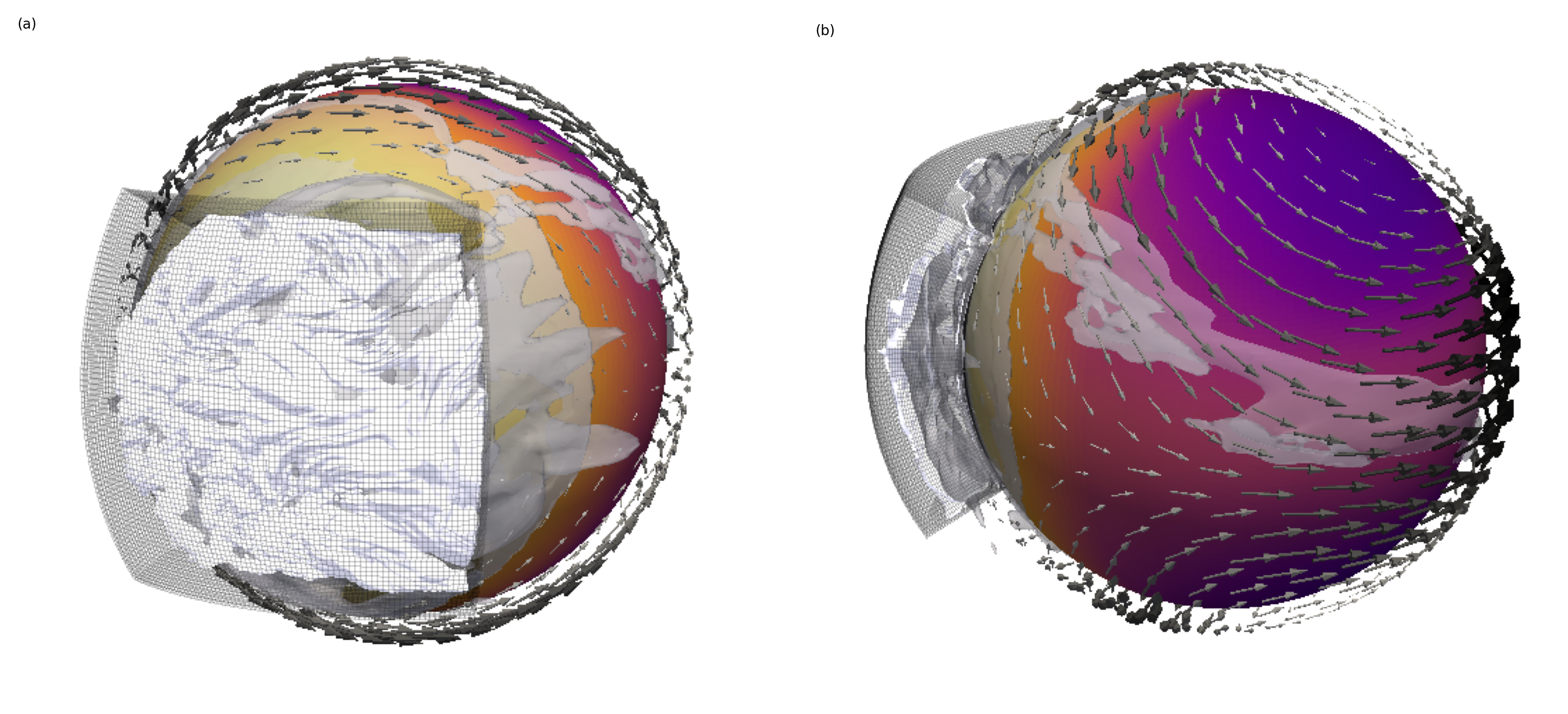Atmospheric convection

Convection is a major driver of energy transport in planetary atmospheres. It is a key process in the formation of clouds and precipitation. I use high-resolution models to resolve convective dynamics on Earth-like planets and sub-Neptunes.

Characterising exoplanets in terms of their potential habitability and the detectability of their atmospheres relies on physically justified modelling of cloud processes. Directly related to cloud formation is moist convection. With sufficient model resolution, convection can be simulated explicitly without relying on approximations, thus improving the accuracy of exoplanetary climate predictions. In my 2020 study1, I performed such convection-resolving simulations using the Unified Model for temperate Earth-sized planets, using TRAPPIST-1e and Proxima Cenatauri b as possible examples. My simulations indicate that the transport of energy and material from the day hemisphere to the night hemisphere is markedly different when convection is directly resolved.
Using the new model of the Met Office, LFRic, I showed that convection can be resolved in a stretched-mesh configuration2, which captures the key feedback between convection on the day side and the global climate of the planet.